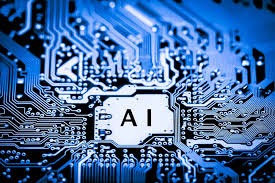Advancements in Artificial Intelligence (AI) and Machine Learning (ML) are driving a revolution across industries, reshaping the future of technology. At the core of these developments are Printed Circuit Boards (PCBs), which play a critical role in the hardware supporting AI and ML systems. This article explores how PCBs are enabling AI and ML, the challenges in designing them, and innovations that will shape the future.
Understanding PCBs in AI and ML Hardware
The Foundation of Modern Computing
PCBs are the backbone of all digital electronics, including AI and ML hardware. These boards house key components—such as processors, memory modules, and power management systems—that ensure the seamless functioning of complex systems. AI and ML systems require high-performance computing, which places precise demands on the electronics and architectures that support them.
Specialized Requirements for AI and ML Hardware
AI and ML applications demand high-speed data processing, precise power management, and superior thermal control. As such, PCBs for AI/ML hardware must address several critical challenges:
- High-speed data transmission
- Efficient power distribution
- Thermal management
- Signal integrity
- Electromagnetic interference (EMI) mitigation
Meeting these criteria is essential for developing reliable and high-performing AI/ML hardware.
Design Considerations for AI/ML PCBs
High-Density Interconnect (HDI) Technology
With AI/ML systems becoming smaller and more powerful, HDI PCBs are necessary to fit more components into compact spaces. HDI boards maximize the use of the available surface area, enabling miniaturization without compromising performance.
Multi-Layer PCB Designs
AI and ML processors are complex and require multi-layer PCB designs—with 4 to 20+ layers. These layers carry power, ground, and signal routes, improving both power distribution and signal isolation.
Advanced Materials for AI/ML PCBs
Traditional materials, such as FR-4, struggle to meet the high-frequency and thermal demands of AI/ML hardware. Modern designers use advanced materials to address these challenges:
- High-speed laminates (e.g., PTFE, ceramic-filled hydrocarbon)
- Low-loss materials for better signal integrity
- Thermally conductive substrates for heat dissipation
These materials improve signal integrity, reduce power losses, and prevent overheating.
Power Management and Distribution
Efficient Power Delivery
AI and ML processors consume significant power, making stable power distribution a top priority. Key design strategies include:
- Power plane segmentation to separate high-current areas
- Decoupling capacitors for noise reduction
- Voltage regulator module (VRM) optimization to provide steady power
Dynamic Power Management
Energy efficiency is crucial, especially for battery-powered AI devices. Modern PCBs feature dynamic power management systems with functions like:
- Power gating (turning off unused circuits)
- Voltage scaling (adjusting power levels as needed)
- Adaptive clocking (matching power usage with workload)
Thermal Management Strategies
Heat Dissipation Techniques
High computational loads generate heat, which can affect system performance. Designers integrate various techniques to manage heat effectively:
- Copper coin technology for localized heat spreading
- Thermal vias to transfer heat away from hotspots
- Built-in heat sinks within the PCB design
Thermal Simulation and Analysis
Using thermal simulation software helps designers predict heat distribution and determine optimal cooling strategies. This ensures the hardware remains reliable under heavy workloads.
Signal Integrity and EMI Mitigation
High-Speed Signal Routing
AI/ML systems require high-speed data transfer, which demands precise routing to prevent signal degradation. Designers use techniques like:
- Impedance matching
- Differential pair routing
- Layer stack-up design to reduce crosstalk and signal reflection
Electromagnetic Interference (EMI) Mitigation
High-speed circuits in AI hardware can generate EMI, which disrupts performance. Designers apply various methods to ensure electromagnetic compatibility (EMC):
- Proper grounding and shielding
- Use of EMI suppression components
- Strategic component placement to minimize interference
Flexible and Rigid-Flex PCBs in AI/ML Applications
Adapting to Complex Form Factors
AI/ML capabilities are increasingly integrated into wearable devices, robotics, and medical equipment. Flexible and rigid-flex PCBs offer several advantages for such applications:
- Lightweight and compact designs
- Integration into curved surfaces
- Increased durability in high-vibration environments
These PCBs enable innovative designs, such as AI-powered medical implants and smart clothing.
Future Trends in AI/ML PCB Design
3D Printed Electronics
3D printing is transforming PCB manufacturing, offering:
- Rapid prototyping for AI/ML hardware
- Integration of electrical and mechanical functions
- Custom cooling solutions via 3D-printed structures
Photonic PCBs
As AI and ML systems demand faster data processing, photonic PCBs are emerging as a promising solution. These PCBs use light signals instead of electrical signals for data transmission, offering:
- Higher bandwidth
- Lower power consumption
- Reduced latency
Although still in development, photonic PCBs could revolutionize AI/ML hardware.
Conclusion
The future of AI and ML is deeply tied to the evolution of PCB technology. Innovations such as HDI designs, advanced materials, and 3D printing are enabling the development of smaller, faster, and more efficient hardware. At the same time, power management, thermal control, and EMI mitigation remain critical challenges for designers.
PCBs will continue to be the foundation of AI and ML hardware, supporting breakthrough applications and pushing the limits of computing. As AI and ML technologies advance, PCB innovations will play a vital role in unlocking their full potential, shaping a smarter and more connected future. Looking for expert PCB manufacturing? Discover Rushpcb.co.uk for precision and quality you can trust
